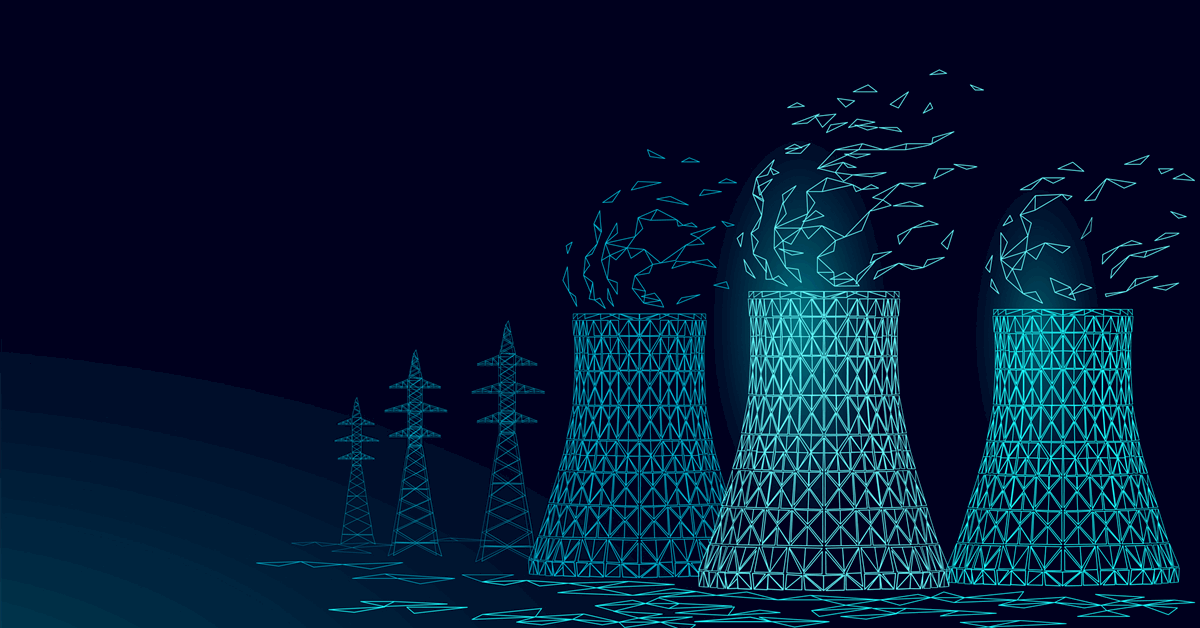Meta and Constellation sign 20-year nuclear power deal in Illinois to power AI
/ AP
Meta strikes 20-year deal with nuclear power plant in Clinton, Illinois

Meta has cut a 20-year deal to secure nuclear power to help meet surging demand for artificial intelligence and other computing needs at Facebook's parent company.
The investment with Meta will also expand the output of a Constellation Energy Illinois nuclear plant.
The agreement announced Tuesday is just the latest in a string of tech-nuclear partnerships as the use of AI expands. Financial details of the agreement were not disclosed.
Constellation's Clinton Clean Energy Center was actually slated to close in 2017 after years of financial losses but was saved by legislation in Illinois establishing a zero-emission credit program to support the plant into 2027. The agreement deal takes effect in June of 2027, when the state's taxpayer funded zero-emission credit program expires.
With the arrival of Meta, Clinton's clean energy output will expand by 30 megawatts, preserve 1,100 local jobs and bring in $13.5 million in annual tax revenue, according to the companies. The plant currently powers the equivalent of about 800,000 U.S. homes. George Gross, professor of electrical and computer engineering at the University of Illinois. estimates that 30 additional megawatts would be enough to power a city with about 30,00 residents for one year.
"Securing clean, reliable energy is necessary to continue advancing our AI ambitions," said Urvi Parekh, Meta's head of global energy.
Surging investments in small nuclear reactors comes at a time when large tech companies are facing two major demands: a need to increase their energy supply for AI and data centers, among other needs, while also trying to meet their long-term goals to significantly cut greenhouse gas emissions.
Constellation, the owner of the shuttered Three Mile Island nuclear power plant, said in September that it planned to restart the reactor so tech giant Microsoft could secure power to supply its data centers. Three Mile Island, located on the Susquehanna River just outside Harrisburg, Pennsylvania, was the site of the nation's worst commercial nuclear power accident in 1979.
Also last fall, Amazon said it was investing in small nuclear reactors, two days after a similar announcement by Google. Additionally, Google announced last month that it was investing in three advanced nuclear energy projects with Elementl Power.
U.S. states have been positioning themselves to meet the tech industry's power needs as policymakers consider expanding subsidies and gutting regulatory obstacles.
Last year, 25 states passed legislation to support advanced nuclear energy, and lawmakers this year have introduced over 200 bills supportive of nuclear energy, according to the trade association Nuclear Energy Institute.
Advanced reactor designs from competing firms are filling up the federal government's regulatory pipeline as the industry touts them as a reliable, climate-friendly way to meet electricity demands from tech giants desperate to power their fast-growing artificial intelligence platforms.
Still, it's unlikely the U.S. could quadruple its nuclear production within the next 25 years, like the White House wants. The United States lacks any next-generation reactors operating commercially and only two new large reactors have been built from scratch in nearly 50 years. Those two reactors, at a nuclear plant in Georgia, were completed years late and at least $17 billion over budget.
Additionally, Gross recommends that the U.S. invest more in the transmission grid that moves that power around.
"That's my biggest concern," Gross said, adding that spending on the grid has actually fallen off in recent years, despite the voracious demand for energy.
Amazon, Google and Microsoft also have been investing in solar and wind technologies, which make electricity without producing greenhouse gas emissions.
Shares of Constellation Energy Corp., based in Baltimore, were flat Tuesday.
Is the U.S. ready for nuclear-powered AI?
France has touted its ample nuclear power — which produces about 75% of the nation's electricity, the highest level in the world — as a key element in its pitch to be an AI leader. Hosting an AI summit in Paris earlier this year, French President Emmanuel Macron cited President Donald Trump's "drill baby drill" slogan and offered another: "Here there's no need to drill, it's just plug baby plug."
In the U.S., however, most of the electricity consumed by data centers relies on fossil fuels — burning natural gas and sometimes coal — according to an April report from the International Energy Agency. As AI demand rises, the main source of new supply over the coming years is expected to be from gas-fired plants, a cheap and reliable source of power but one that produces planet-warming emissions.
Renewable energy sources such as solar and wind account for about 24% of data center power in the U.S., while nuclear comprises about 15%, according to the IEA. It will take years before enough climate-friendlier power sources, including nuclear, could start slowing the expansion of fossil fuel power generation.
A report released by the U.S. Department of Energy late last year estimated that the electricity needed for data centers in the U.S. tripled over the past decade and is projected to double or triple again by 2028 when it could consume up to 12% of the nation's electricity.
Why does AI need so much energy?
It takes a lot of computing power to make an AI chatbot and the systems they're built on, such as Meta's Llama. It starts with a process called training or pretraining — the "P" in ChatGPT — that involves AI systems "learning" from the patterns of huge troves of data. To do that, they need specialized computer chips — usually graphics processors, or GPUs — that can run many calculations at a time on a network of devices in communication with each other.
Once trained, a generative AI tool still needs electricity to do the work, such as when you ask a chatbot to compose a document or generate an image. That process is called inferencing. A trained AI model must take in new information and make inferences from what it already knows to produce a response.
All of that computing takes a lot of electricity and generates a lot of heat. To keep it cool enough to work properly, data centers need air conditioning. That can require even more electricity, so most data center operators look for other cooling techniques that usually involve pumping in water.











